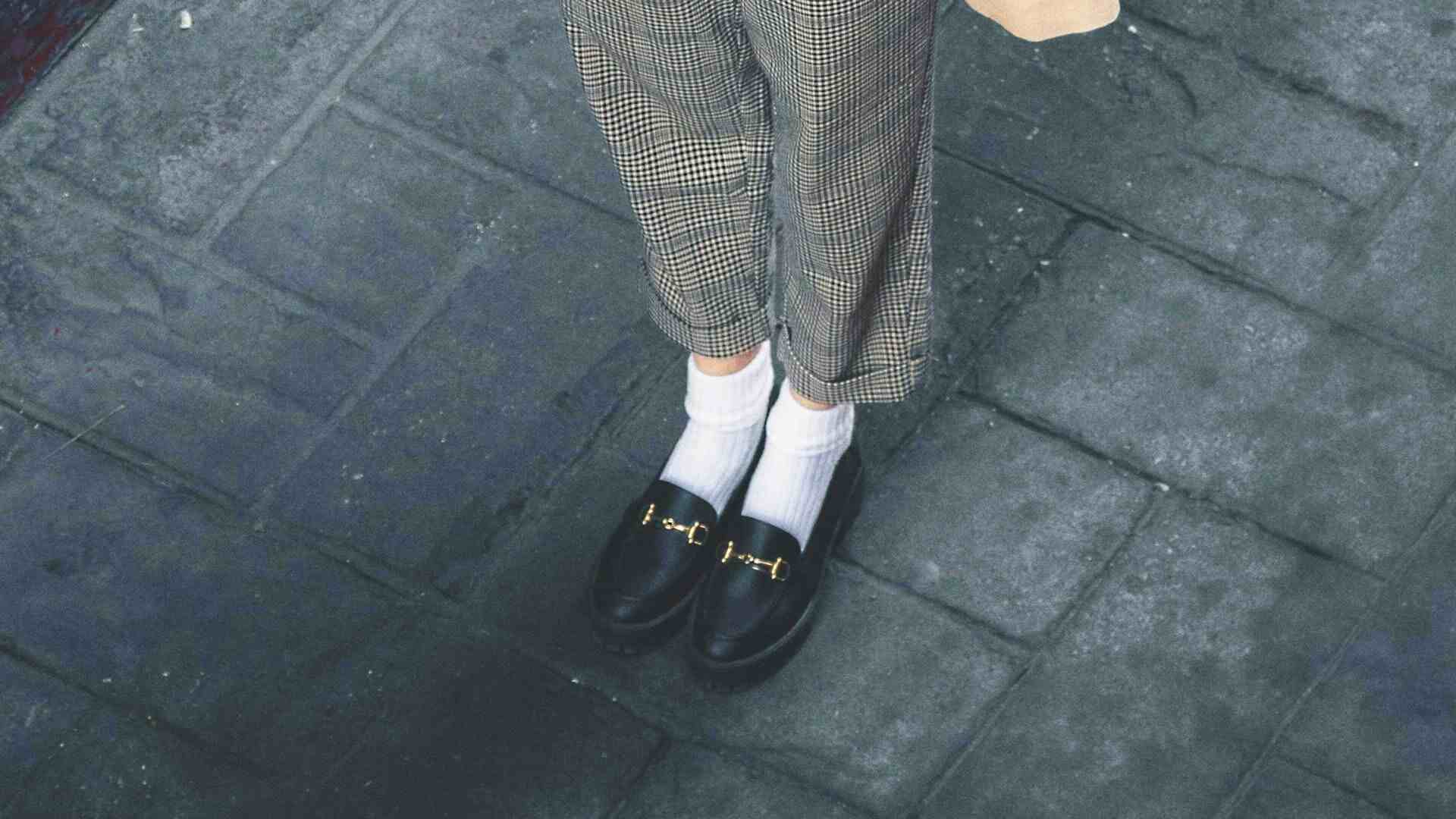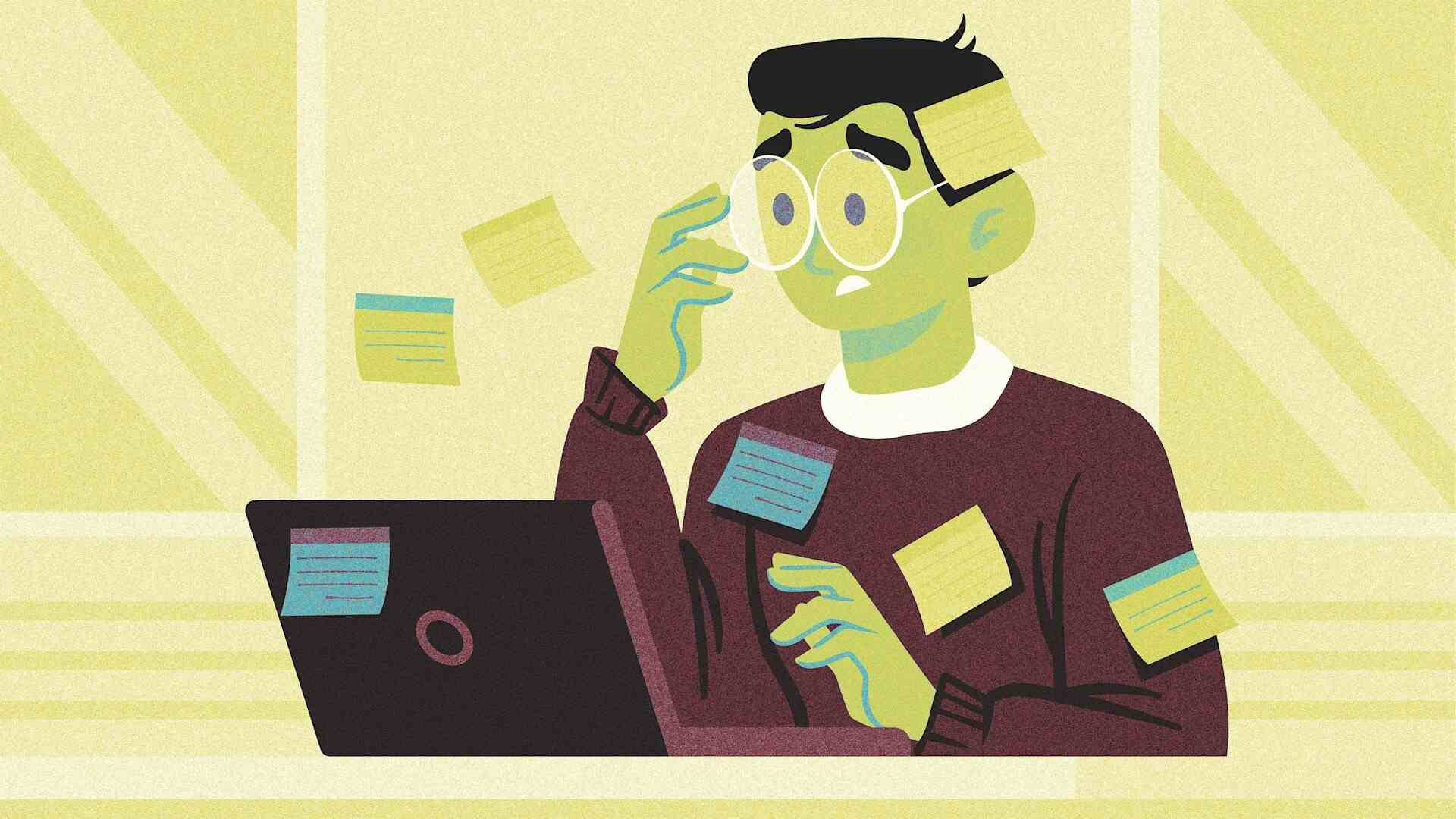- | 8:00 am
From ‘corpcore’ to ‘old money,’ office wear is in. Here’s why
With oxfords, blazers, and loafers en vogue, the office has pervaded our personal style. Is the return to work to blame?

From Los Angeles to London, hipsters everywhere are wearing . . . loafers.
The slip-on leather or suede shoe once reserved for business dinners or an evening at the yacht club can now be spotted on any casual passerby in Brooklyn, New York.
The streetwear popularity of office-inspired “corpcore” goes beyond loafers, though. Oxford button-downs and librarian-esque glasses are all the rage. Blazers and power suits dot the sidewalks of New York’s Lower East Side. Even pearls, once a staple among white-collar professionals, have had a gender-neutral resurgence.
And on TikTok, “old money” and “office siren” trends—in which influencers don chinos and pencil skirts—have taken off, leaving many wondering to what degree these fads are earnest or, in fact, ironic.
So why has office wear seeped out of the boardroom and into the everyday closet? Fast Company spoke with fashion industry insiders to trace the thread of the trend.
RETURNING TO WORK(WEAR)
With the return to in-person work, more and more people are heading to the office and taking their business-casual stylings with them. Thus, that striking blazer-and-shorts combo may be more functional than fashion statement. Christina Abayomi, cofounder and creative director of Re Ona, designs her brand’s clothes to fit this exact in-office conundrum.
“There’s no time to run back home to change,” Abayomi says. “You want to make sure that what you’re wearing is suitable for work but then it also is stylish for a night out.”
The shift toward office-appropriate attire may also be a backlash to the years of virtual work. The pandemic saw an explosion of what many call “luxe loungewear.” In April 2020, purchases of sweats spiked by 80%, and Google searches for the garment hit a 14-year high. Sales of loungewear in the U.K. surged 1,303% in 2020. Now many are packing up their sweatshirts and buttoning up their blouses.
“Fashion reflects what’s happening in the world,” says Kristina Spiro, art director of Frank and Oak. “We’ve been isolated for so long. There’s a sense of connection that is missing. The idea of returning to the office [has] a social aspect, too.”
What we may be seeing is a sartorial compromise for the hybrid work era—somewhere in the middle, not constricted by the stiff suits of an in-person past, but also not swaddled in the hoodies of our virtual days. “It’s still a hybrid type of workwear or dressing up, where there are still some elements that can be more casual,” Spiro says. “It’s wearing a tie, but with jeans.”
REJECTING FAST FASHION
Another potential reason for the trend could be that some consumers are rejecting fast fashion in favor of high-quality vintage pieces that were once only afforded by the wealthy.
This may be the case for the rise in popularity of the oxford shirt. The tailored look of an oxford depends on high-quality materials to not look warped and thin. Finding a fast-fashion oxford, one that you could truly wear to work, is almost impossible. Although the era of fast fashion has encouraged some to follow trends and partake in seasonal-fashion garbage dumps, other consumers are gravitating toward a wardrobe anchored by timeless pieces, even if they have to shell out a few extra bucks to get them.
As president of Mmgnet Group, Kelly Helfman has seen the spike in demand for more high-end designs firsthand. Mmgnet is the parent company of multiple high-brow fashion industry events, including Coterie New York and Magic.
“There’s a little bit of fatigue around wasteful clothing,” Helfman says. “That oxford shirt is such a timeless piece that will come in and out and you can style it in different ways. . . . It’s just such a great investment for consumers.”
Helfman also links the workwear boom to the recent “quiet luxury” trend, where even everyday consumers are buying $1,500 Loro Piana sweaters to look like Gwyneth Paltrow. Presently, she reasons, we’re willing to spend more on our wardrobe as long as it’s on items that last.
At Re Ona, Abayomi invites her customers to take that plunge, investing in more sustainable and long-lasting items. For many, that starts with workwear. “Especially with Gen Z and millennials, they’re really interested in slow fashion,” she says. “They’d rather spend a little bit more on a classic style that they can wear all year round, season after season.”
EMBRACING GENDER NONCONFORMITY
Workwear may also present a way to embrace androgyny and genderlessness. Some office staples truly work for everyone, like a classic button-up shirt. Other trends offer a means to subvert gender (think women donning blazers and men adorning their necks with pearls).
Helfman points to the “boss babe” era as the beginning of the workwear explosion. Still, as the term girlboss becomes déclassé, a generation of young people continue to reject gender norms. “It’s so beautiful to see that we’re all pushing the boundaries and removing gender out of it and just experimenting,” Helfman says. “This empowered woman is rocking a full-blown suit, head to toe, and that’s acceptable now.”
Even before the office wear boom, queer and nonbinary people were embracing these styles as a means of self-expression. Adelle Renaud, cofounder and president of Peau de Loup, founded her brand to build clothes for nonbinary buyers, which started with the classic button-up.
“It was kind of the epitome of what I wanted in menswear that I could never really find,” Renaud says. “Button-ups always had a little bit more attention to detail. It was an effortless look.”
Like dozens of other fashion trends, office wear may have originated in queer circles. Just where do you think crop tops for men came from? Renaud expresses this sentiment exactly: Workwear isn’t new, but rather a continuation of what they’ve already been working on. “We’ve always been here,” Renaud says. “We’ve always wanted this type of clothing.”







































